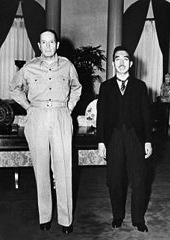Japan: Is That Really The Third Arrow?
Does the third arrow of "Abenomics" miss the target in ending Japan’s stagnation?
June 17, 2013

Japanese Prime Minister Shinzo Abe’s recently announced structural reforms, the third of his “Abenomics” plan to fix Japan’s stagnant, drifting economy. It’s a disappointment.
Abe’s third arrow is the one that counts. But on its present course, that arrow will miss its target of ending Japan’s twenty years of decline by a wide margin.
Shooting the first two arrows (printing money like crazy and letting the government spend more of it) was easy.
What Japan really needs are the thorough structural reforms, the third arrow.
But what Japan’s prime minister Abe told us last week about this arrow falls far short of thorough reforms. Selling drugs online is not good enough. Freer trade with the US and Asia would help nicely, yes.
But first and foremost, Japan needs to expose its sheltered domestic economy, especially the non-tradable goods and services, to fierce competition — and to allow immigration to make up for its dearth of babies.
Otherwise, there won’t be enough people in Japan producing enough to keep servicing the public debt. In a way, Japan needs the equivalent of the EU’s Common Market.
Let’s hope that, after the upper house elections on 21 July, Abe will double up, or treble up, on structural reforms.
A failure to seriously tackle Japan’s underlying structural problems, which have nothing to do with deflation, could have two serious consequences:
First, Japan’s macro stimulus would turn out to be no more than a flash in the pan, leaving the country worse off after the liquidity-induced high than before.
Second, adverse market reactions to the lack of a credible structural plan could let the government and Bank of Japan try to shoot the first arrows again.
Even more aggressive monetary policies in a country that is not facing up to its real issues could trigger capital flight, a further plunge in the Yen and, in a worst case scenario, even an inflationary downward spiral.
Fortunately, these risks still look far-fetched at the moment. Japan still has time to reform itself. Also, the short-term boost to demand from the current monetary and fiscal policies could well stabilise market confidence nicely for a while.
Japan is a country that, for the outside world, is mostly a competitor than a market. The global repercussions of a Japanese calamity would probably be limited (the US, China or the Eurozone hitting the rocks would matter much more).
But if Abe really wants to turn Japan into a place that can stand tall next to an ascendant China, he better bite the bullet of unpopular and painful structural change.
Read previous

Japan: The World’s Really Lucky Country
June 16, 2013
